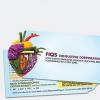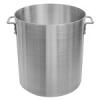Greetings, all! I have a question that I am wanting some opinions on.
When I started my position, one of my major focuses was micro, notably coliform counts. At the outside lab, they were using petrifilm at a 1:10 dilution, which is the standard. However, I was wanting to be extra cautious and see if any bacteria was growing and asked for a 1:1 dilution.
A client of ours recently started requesting our test results. Most are <1, but there are a few that are <10, but recorded as maybe 8, or 5, etc etc.
I want to return back to our 1:10 dilutions, however I need to be able to explain why we were going back to it. (It's much cheaper and will be more efficient as we will be able to test our internal samples the same way)
The FDA requires that our coliform counts be 'no greater than 20' but I only send things out that are <10.
How do we explain that there could be trace coliforms, but they don't pose any harm? If something is >1 but <10, is that a real indicator of a dirty product?
Thank you so much for your time!
















